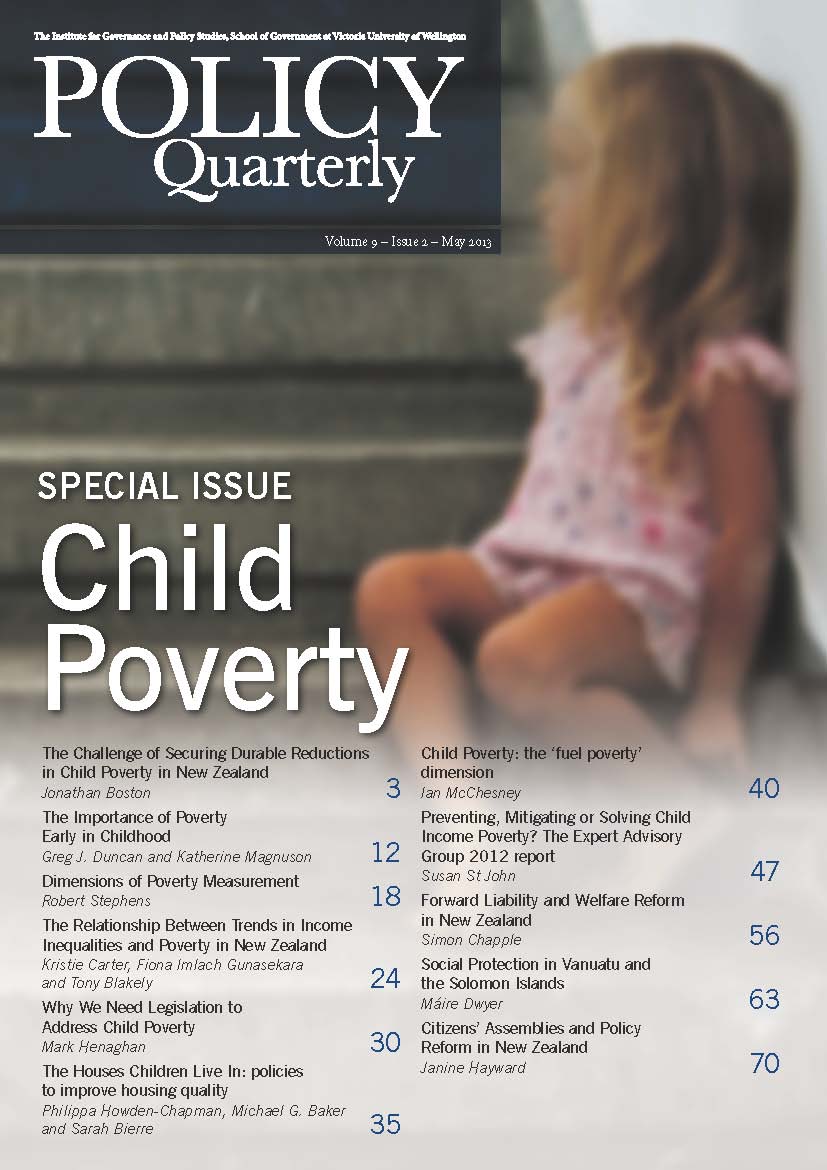The houses children live in: policies to improve housing quality
DOI:
https://doi.org/10.26686/pq.v9i2.4450Keywords:
OECD, health and safety rating, Children’s Commissioner’s Expert Advisory Group on Solutions to Child Poverty (EAG), improving the quality of housing, damp, musty or mouldy conditions, Housing New Zealand Corporation (HNZC), hospitalisation ratesAbstract
New Zealand ranks near the bottom of the OECD in its health and safety rating for its children (Public Health Advisory Committee, 2010). One of the key drivers of this is the relatively poor state of our housing. Young children spend virtually all of their time in the home environment, much of which is poor quality rental housing (Baker, Keall et al., 2007). The Children’s Commissioner’s Expert Advisory Group on Solutions to Child Poverty (EAG) recently highlighted the broad costs of not maintaining this essential infrastructure for the health of children, their educational opportunities and household income. New Zealand research has clearly demonstrated that improving the quality of housing enhances children’s health and attendance at school, while more energy efficient houses reduce our carbon emissions. This article gives an overview of current research and discusses the feasibility of various policies to address this pressing problem.
Downloads
Downloads
Published
Issue
Section
License
Permission: In the interest of promoting debate and wider dissemination, the IGPS encourages use of all or part of the articles appearing in PQ, where there is no element of commercial gain. Appropriate acknowledgement of both author and source should be made in all cases. Please direct requests for permission to reprint articles from this publication to Policy-Quarterly@vuw.ac.nz.



